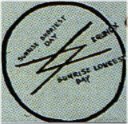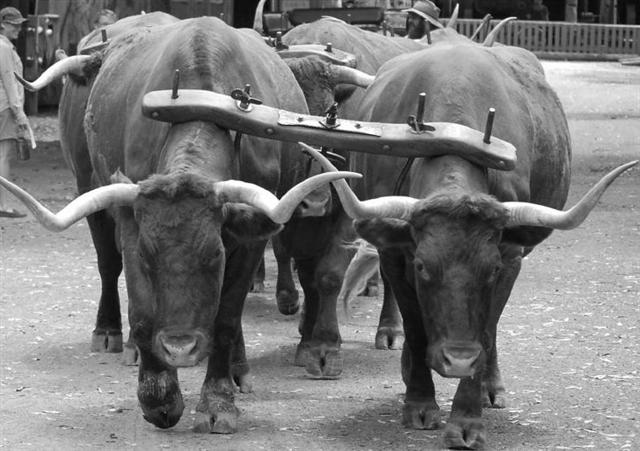8. On the island of Tongatapu stands a famous trilithon by the name of Ha'amonga-'a-Maui (The Burden of Maui). It was 'built by the 11th Tui Tonga about 1200 AD as a gateway to the royal compound'. The height is 16 ft, the width 19 ft, and the weight approximately 35 tons. (Source: Björn Danielsson, Björn Danielsson i Söderhavet.)
"During his coronation year king Taufa'ahau Tupou IV advanced the theory that the Ha'amonga stones must have served a greater purpose than the more obvious function as a gateway. This proved the case when closer investigation revealed a secret mark on the lintel (= threshold) stone:
In June 21st 1967 at dawn his majesty was present at this place and it was a thrilling moment when the sun rose at the exact point indicated by his interpretation of the lines etched on the great stone." (A text on a wooden sign at the side of the trilithon according to Danielsson.) I remembered this trilithon because its name includes hak'amonga, which can be read as haka-amoga. And a burden (amoga) is what Atlas is carrying.
With the Pleiades at the beginning of a new year the constellation is placed between the old and the new year (uniting them like a yoke). The god Janus is similarly looking in both directions, both backwards and forwards. The dry old year should now be tied up in a bundle (amoga) and such can best be carried on the back. If a new year is beginning at a solstice (when the old sun has stopped to move, is dead) then the lines on top of the lintel stone reasonably should be directed towards the rising sun at a solstice. The burden of Atlas should therefore define his position as the end of a solstice. Furthermore, a yoke is what unites a pair of oxen (and I think of Taurus in the 5th right ascension hour).
|


